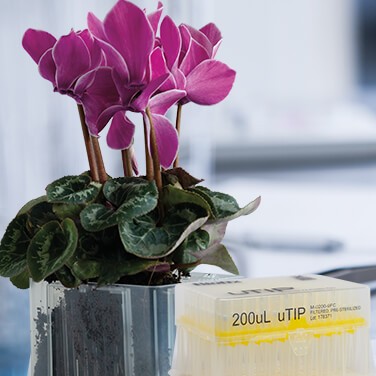Science and Sustainability in the Laboratory — A History of Waste
If current production and waste management trends continue worldwide, researchers in California predict that roughly 12,000 metric tons of plastic waste will end up in landfills or in the environment by 2050. Despite scientists making up only a small fraction of the world’s population, they are big contributors to the plastic problem. Many common laboratory items are single-use plastics that are thrown away rather than recycled. Researchers at the University of Exeter estimated that laboratories were responsible for around 5.5 million metric tons of plastic waste in 2014 — roughly the same as the weight of 67 cruise liners.
Scientists may justify their use of disposables and single-use plastics as a necessary evil that saves their laboratories time and money. But with the plastic-waste problem snowballing, the scientific community can no longer ignore their impact on the environment. Most scientists are well-aware of the amount of plastic waste that their research produces. Worldwide, researchers are beginning to embrace greener laboratory practices by reducing, reusing, and recycling laboratory items that have traditionally been thrown into the trash. And many laboratory supply companies are working to meet the needs of new, greener labs.
Greening Up Research
Laboratory plastic waste comes from a variety of sources, including PCR tubes, tissue culture flasks, pipette tips, and packaging. Most of this waste ends up in the landfill — unless it’s particularly hazardous, in which case it ends up in an incinerator. Arta Motadel, Chief Technology Officer of Biotix, recalls being “shocked by the scale of unnecessary waste” when he began his career in bioengineering and biochemistry nearly 30 years ago. With years of hands-on experience as a laboratory engineer and decades working in pipette design, he has been seeing the growth of this dilemma firsthand. He decided that his contribution would be innovating at the manufacturing level to address this problem and minimize waste at the source.
Many single-use lab plastics can be recycled if they aren’t highly contaminated. Several universities and biotech laboratories have introduced recycling programs to reduce plastics entering the waste stream. For example, the Lab Plastics Recycling Program at the University of British Columbia allows all number 1–7 plastics to be recycled, including wrappers from plates and flasks, pipette tip boxes, as well as plastic waste containing Risk Group 1 Agents — deemed low risk for individuals and the community by Health Canada — such as tips used for DNA extraction.
Sustainability Minded
Sustainability-minded companies such as Biotix are embracing comprehensive ways to minimize the amount of plastic entering the waste stream. Biotix is accomplishing this through a well-rounded approach that focuses not only on reusing and recycling plastic items once they have been created, but also addressing the issue at its core by minimizing the amount of plastic used in creating these products.
Biotix pipette tips contain roughly 30% less plastic than competitor tips. This innovative design called FlexFit enables researchers to continue using and disposing of tips at the same rate while still reducing their environmental footprint. As an added benefit, the pipette tips’ thin-walled design avoids the need for excessive forces during manual or automated processes, reducing energy expenditure. Stackable pipette tips that insert straight into an existing pipette tip rack, such as Biotix CleanPak Reload Tips, reduce environmental impact even further. The company also makes products that offer dual functionality. Biotix pipette tip rack bases are thin walled but strong; they are reusable as automation or manual reagent reservoirs, reducing the need to purchase a second item (and more plastic).
Switching to low-plastic or reusable laboratory items can have a huge impact. Looking at the chart shown here, if a single researcher switched to Biotix racks from competitor E, they would be reducing their environmental footprint by more than one pound of plastic per pack. Or if a researcher opted to use
Biotix CleanPak Reload Tips, inserting them into an existing pipette tip rack, they would prevent another 30% of plastic waste from going to the trash. To combat the plastic problem further, the resealable bags used for the Biotix CleanPak Reload Tips can be reused as storage bags for tubes or other laboratory sundries, eliminating the need for other storage bags.
Combined, Biotix’s numerous environmentally conscious products and practices are reducing the amount of plastic entering landfills. Their commitment to providing products that offer sustainability alongside exceptional quality is helping laboratories integrate greener practices into their workflows without sacrificing accuracy or productivity.
With the worldwide scale of research likely to increase in the coming years, finding a comprehensive approach to minimize laboratory product waste is more important than ever. Biotix’s innovative product designs minimize the amount of plastic required to produce laboratory plastics, effectively reducing plastic waste at the source. In combination with reuse and recycling, the efficient designs support scientists in doing their part to combat the negative impacts of plastics on the environment. Biotix is committed to making high-quality products with less plastic, providing a hint of what a sustainable laboratory culture will look like in the near future.

